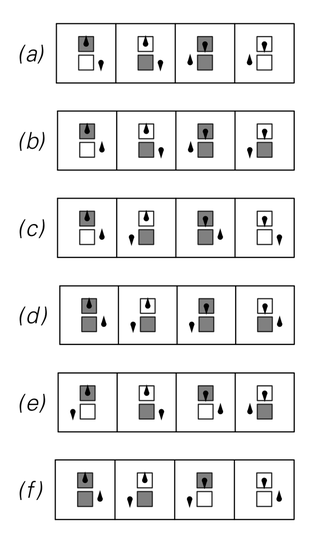From our experience with mobile automata, however, we expect that there should be Turing machines that have more complex behavior.
With three states for the head, there are about three million possible Turing machines. But while some of these give behavior that looks slightly more complicated in detail, as in cases (a) and (b) on the next page, all ultimately turn out to yield just repetitive or nested patterns—at least if they are started with all cells white.
With four states, however, more complicated behavior immediately becomes possible. Indeed, in about five out of every million rules of this kind, one gets patterns with features that seem in many respects random, as in the pictures on the next two pages [80, 81].
So what happens if one allows more than four states for the head? It turns out that there is almost no change in the kind of behavior one sees. Apparent randomness becomes slightly more common, but otherwise the results are essentially the same.
Once again, it seems that there is a threshold for complex behavior—that is reached as soon as one has at least four states. And just as in cellular automata, adding more complexity to the underlying rules does not yield behavior that is ultimately any more complex.
 |  |
Examples of Turing machines with two possible states for the head. There are a total of 4096 rules of this kind. Repetitive and nested patterns are seen, but nothing more complicated ever occurs.